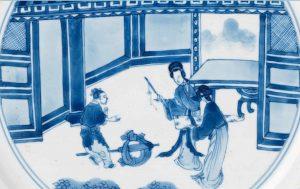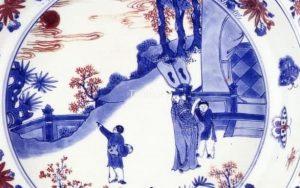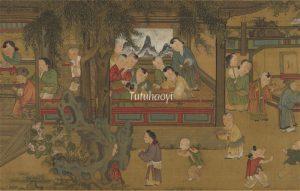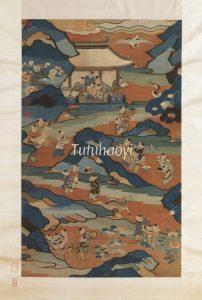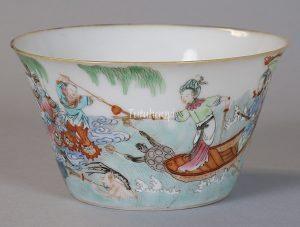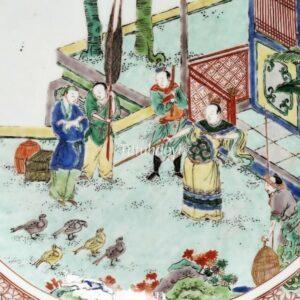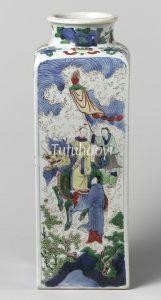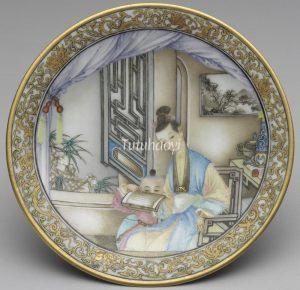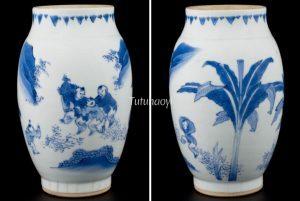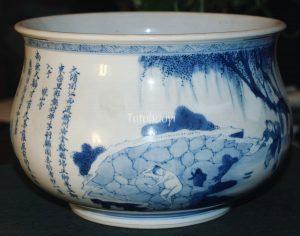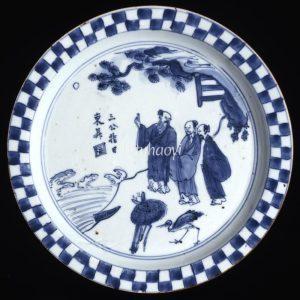Showing Results Containing
European descriptions of porcelain paintings that have story scenes tend to describe ‘figures and surroundings’, rather than identifying them. Thus, a large part of those beautiful stories intended by pot painters was lost in the description. Here...
In Chinese porcelain painting, it can be tricky to interpret a round disc in the sky as a sun or a moon. Knowledge of Chinese culture and pun rebuses are the keys to explain the meanings of the motifs and scenes correctly. Here are some examples…<...
The Hundred Children motif (百子图) represents the most elaborate and auspicious extension of the broader Children at Play theme in traditional Chinese art. While both mot...
Children at Play is a classical motif in traditional Chinese art, portraying lively scenes of children engaged in games and daily amusements. These depictions often feature children flying kites, kicking balls, turning somersaults, enjoying lanterns, performing lion or dragon dances, tending flowers, pla...
Nezha (哪吒) is a legendary warrior deity in Chinese mythology, known for his rebellious spirit, supernatural abilities, and deep connections to Daoist and Buddhist traditions. His earliest roots can be traced to Buddhist texts, where he appears as a guardian under Vaiśravaṇa, the Heavenly King (多闻天王, Duowen Tianwang). Ove...
Jia Chang (贾昌 712–810) from the Tang Dynasty was renowned for his exceptional skills in training roosters for cockfighting. His legendary story is recorded in the Extensive Records of the Ta...
This is a legendary story about the birth of Confucius (551 BCE – 479 BCE), the renowned philosopher from ancient China during the Spring and Autumn Period (770 BCE – 475 BCE).
According to The Family History of Confucius (孔子家语), Confucius’ father, Shuliang He (叔梁纥), had nine daughters but no sons from hi...
Paintings featuring mothers (and/or fathers) and children are commonly referred to as ‘Ke Zi Paintings 课子图’, which in modern terms would be called ‘Parent-Child Paintings’. In these images, the mother is depicted either sitting or standing, guiding, and disciplining one or several children as they play, read, or...
Pun Design :
Five + Boy + Fighting over + Helmet
Punning Details:
– The action of five (more or fewer) boys fighting over something refers to ‘夺 duo’. ‘Five’ is a function word.
– ‘kui 盔 helmet’, ...
Sima Guang (司马光, 1019-1086) is an eminent scholar and politician during the Northern Song dynasty (960-1127) in China. His greatest achievement in life is compiling a chronicle of 1,362 years’ history of China from 403 BCE to 959 CE. The book is entitled Zizhi Tongjian (资治通鉴), or ‘Comprehensive Mirror in Aid of ...
Wang Xiang (王祥 185–269) served as the Grand Protector (taibao 太保) in the Western Jin court (西晋 265–316 CE) and, as a significant politician, has his biography in the Book of Jin (jinshu 晋书), an official historical text covering the dynasty’s history. When Wang Xiang was a boy, his mother passed away. Hi...
The action of ‘pointing to the sun’ is termed in Chinese as ‘指日 zhi ri’, which sounds and looks exactly the same as (both homophone and homograph of) the phrase ‘指日 zhi ri’ meaning ‘in a few days’ time’. The state of ‘something rising high up’ is ‘高升 gao sheng’ in Chinese, which may be metaphor...
